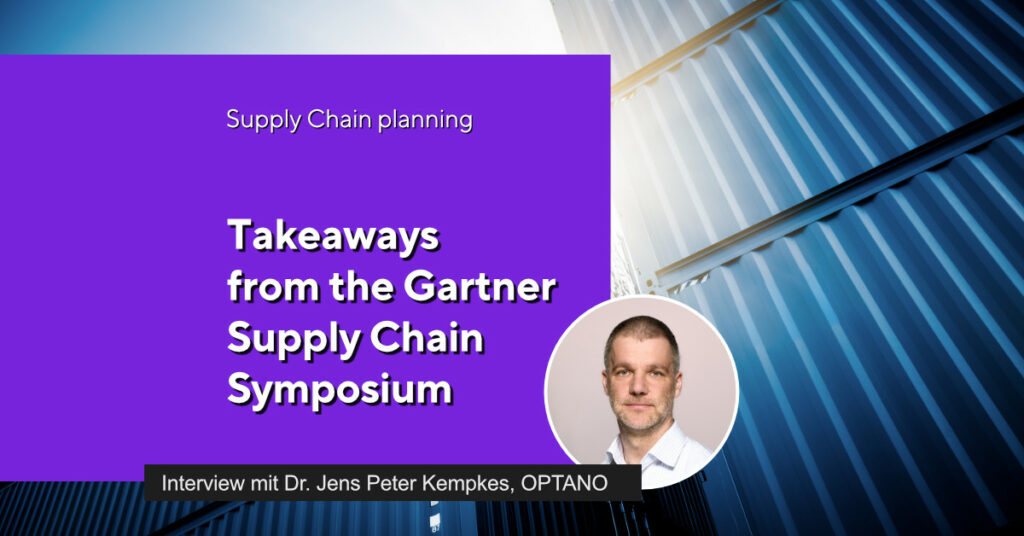Mathematical optimization for grid stability
By now we have become accustomed to the fact that the weather is no longer as predictable as it once was. It is November – and temperatures are higher than expected for this time of year. And if we look back at the spring months – the weather seemed to change from one day to another: One day galeforce winds and snow, the next day the sun all day long with temperatures you would expect to have in early summer.
On cold, windy days, power stations run at full capacity because we need to heat our homes. On the other hand, the wind turbines turn at maximum power in such weather conditions and generate large amounts of electricity. When temperatures are mild, we turn off the heating and when the sun shines the photovoltaic systems can feed in their full power.
Fluctuating energy production – fluctuating energy consumption
The energy transition poses major challenges for grid operators and electricity suppliers. The energy production landscape will be transformed greatly in the coming years: a small number of large conventional power stations will make way for many small, decentralized – and often remote – systems for renewable energy. As described in our seasonal weather scenario above, sustainable electricity from wind and solar energy sources is subject to fluctuating output making its planning a complex matter. Since it relies on the weather, we speak here of volatile energy flows. And whereas “only” the logistics for coal, gas and oil needed to be planned in the past, today new locations for wind, hydro and solar energy are added daily – until the planned substitution has been fully completed.
This means that on the one hand there is the fluctuating generation of sustainable energy. On the other hand there is a further challenge: the demand for renewable electricity increases the more we move away from our dependence on fossil fuels. Industry and private households will consume more electricity in the future. Among others, the increasing share of e-mobility is forcing energy providers and grid operators to make strategic decisions far more often in order to ensure system stability in the future and to avoid supply shortages and, in the worst case, blackouts.
Energy management will become increasingly more complex
The standard frequency in Europe’s electricity network is 50 Hz. To guarantee this frequency, and therefore grid stability, there must be equilibrium in energy production and consumption. The volatile energy flows of renewable systems and the heavy increase in the demand for electricity results in ever increasing complexity in energy production. The grids are being pushed to the limits of their capacity and it is becoming more difficult to guarantee stability. In order to ensure the grids remain stable, grid operators have to intervene frequently. Depending on what measure is taken, this can result in extremely high costs.

Are you interested in our factsheet?
What are the benefits of mathematical optimization?
Rerouting or redispatching electricity?
Going back to our April scenario: the offshore wind turbines in the north of the country generate a particularly high amount of energy on windy days. In the densely populated southern part of Germany, the electricity demand increases on cold days when it gets dark early and solar power production is limited.
In order to make optimal use of renewable energy which is generated by the increasing number of decentralized wind parks and photo-voltaic systems, further transmission lines are in the pipeline. Until then, however, other measures need to be taken in order to effectively use the feed-in power of sustainable electricity production effectively, in spite of the fluctuations, and thus maintain grid stability.
If there is a risk of overload in a specific part of the transmission line in the power grid because the transmission capacity is not sufficient to transmit the electricity generated, then grid operators (in coordination with other operators) have various options at their disposal:
Rerouting electricity
The simplest measure is to reroute the electricity. Electric power transmission lines are switched on and off to avoid an overload on one section of the line. This topological procedure is also applied when maintenance work is being performed on the lines. It is also the most cost-effective way to ensure grid stability.
Redispatch
Redispatching is when short-term changes are made to the deployment of power stations. If load flow calculations predict an overload of a certain part of the line, power stations (or wind parks) which are located upstream of this section, are instructed to reduce their output. Those located downstream of the section are ramped up to feed in the missing amount of power and thus keep the grid frequency stable. However, this procedure involves very high costs because the power station affected is entitled to compensation or additional payment.
Shutting down companies with high energy consumption
In order to maintain stability and avoid blackouts, it is also possible to remove companies, i.e. their factories from the grid if their energy consumption is too high. However, this often has far-reaching implications, which run up high costs. For this reason, this measure is an absolute exception and only seldom put into practice.
More interesting articles
Mathematical optimization and OPTANO for efficient measures
The volatility of renewable energy thus leads to a major increase in interventions to stabilize the system and grid operators are tasked with deciding which measure to take to ensure that the grid operation costs remain at a low level.
By deploying intelligent mathematical optimization methods such as Prescriptive Analytics, planning software like OPTANO has proven to be the best solution here. OPTANO supports you by providing sound recommendations on how to proceed – based on the analysis of all existing data.
In this way, grid operators obtain targeted recommendations for the best and most cost-effective redispatch measures.
If you would like to discover whether mathematical optimization can benefit your projects, then simply download our factsheet “What are the benefits of mathematical optimization?”
Would you also like to learn about how OPTANO can improve your planning processes or do you have any further questions? Contact us! Our consultants would be pleased to answer your questions on grid stabilility. Alternately, send us an e-mail and we will get back to you.
Back to our April scenario again:
While I was writing this article it was raining and rather windy outside. But now the clouds are making way for the first rays of sunshine and tomorrow’s weather looks promising. Let’s make the most of this golden autumn while it lasts..
Do you already know our factsheet on this topic?

In our factsheet “What are the benefits of mathematical optimization?” we ask 5 questions to help you assess whether mathematical optimization brings benefits to your organization.
To obtain our factsheet, all you need to do is enter your contact details in the space below. A pop-up window will then open to download the whitepaper. Please note that by providing us with your email address, you agree that we may contact you on this topic. You may revoke this agreement at any time by contacting [email protected].







